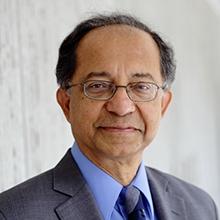You are here
The muddled politics of US inflation
Nov 09,2022 - Last updated at Nov 09,2022
WASHINGTON, DC — Rising inflation has put the United States on edge. While much of the focus so far has rightly been on the pain that price increases inflict on ordinary Americans, many are concerned about the long-term political effects. Today’s inflationary surge may affect US politics long after price pressures ease.
But popular anger reflects a fundamental misunderstanding of the forces driving inflation in the US and beyond. For starters, while the level varies from country to country, today’s inflation is a global phenomenon. Annual consumer-price inflation is at 8.2 per cent in the US, 10.1 per cent in the United Kingdom, 10.4 per cent in Germany, and 11.9 per cent in Italy. Among emerging and developing economies in Asia, year-on-year inflation is at 5.7 per cent in South Korea, 7.4 per cent in India, and 85.5 per cent (not a typo) in Turkey.
While the current outlook for the world economy is undoubtedly grim, we must not lose perspective. Today’s inflationary pressures are nothing like the hyperinflationary episodes of the twentieth century. Interestingly, while developing countries in Latin America and Africa have experienced periods of extreme hyperinflation, the worst episodes on record are Hungary’s 1946 bout, followed by Germany in 1923. Back then, inflation accelerated so rapidly that the price of restaurant-goers’ lunch would often increase as they ate.
Then as now, soaring prices had profound political consequences. In fact, inflation affects politics more than any other economic indicator. As a recent report in The Economist shows, contrary to popular belief, there is little correlation between economic slowdowns and political leaders’ popularity (I believe the same is true of the unemployment rate). But, based on my experience as an economist and an adviser to the Indian government, I suspect that a rigorous statistical study would show that inflation disproportionately affects political leaders’ reputations.
This is partly because people do not need data to experience inflation at gut level. The trade balance is just a figure they hear on the news, the latest jobless claims figures do not mean much to them if they have not lost their own jobs, and it takes so long for GDP data to reflect slowdowns that even this indicator may feel abstract. But you do not need to wait for government data or news reports to learn about inflation. The data are available to you every time you go shopping.
It is no wonder, then, that rising inflation is the issue that most concerns US voters. People are often well-informed about inflation and invariably expect the government to be fully in command of it. That makes inflation a key correlate of political (un)popularity. When I was advising the Indian government and annual inflation was hovering close to 10 per cent, I remember an elderly uncle phoning me as he was grocery shopping to ask earnestly, “Why are you doing this? Prices have risen again.”
But, contrary to the impression one gets from the confident pronouncements of experts, our understanding of inflationary surges is still rudimentary. We know enough to avoid the mistakes of 1946 and 1923, but beyond that, dramatic price movements remain a confounding challenge for policymakers.
President Joe Biden’s administration has been criticised for failing to see that the $1.9 trillion American Rescue Plan might lead to price increases. It was obvious to virtually every economist that this enormous COVID-19 relief package would cause some inflation, but it is easy to see why US policymakers were wary of acknowledging the risk. High inflation can quickly turn into a self-fulfilling prophecy. A government official who says there will be inflation is almost guaranteed to drive up consumer prices just by saying so.
Many officials within the Biden administration surely could see that the rescue package would cause some inflation, even if they could not say so publicly. But they correctly determined that helping lower-income families withstand the pandemic was worth the risk. And, lest we forget, the main driver of today’s soaring prices, in the US and worldwide, is Russia’s invasion of Ukraine, which severely disrupted global energy supplies.
Although pandemic-relief efforts in the US could have been improved with some minor tweaks, policymakers got it right by risking a moderate increase in inflation to protect the most vulnerable Americans during the worst stage of the crisis. Ignoring this is short-sighted and morally wrong. But, as the Republicans may be about to prove, doing so can be a winning political strategy.
Kaushik Basu, a former chief economist of the World Bank and chief economic adviser to the Government of India, is professor of Economics at Cornell University and a non-resident senior fellow at the Brookings Institution. Copyright: Project Syndicate, 2022. www.project-syndicate.org













